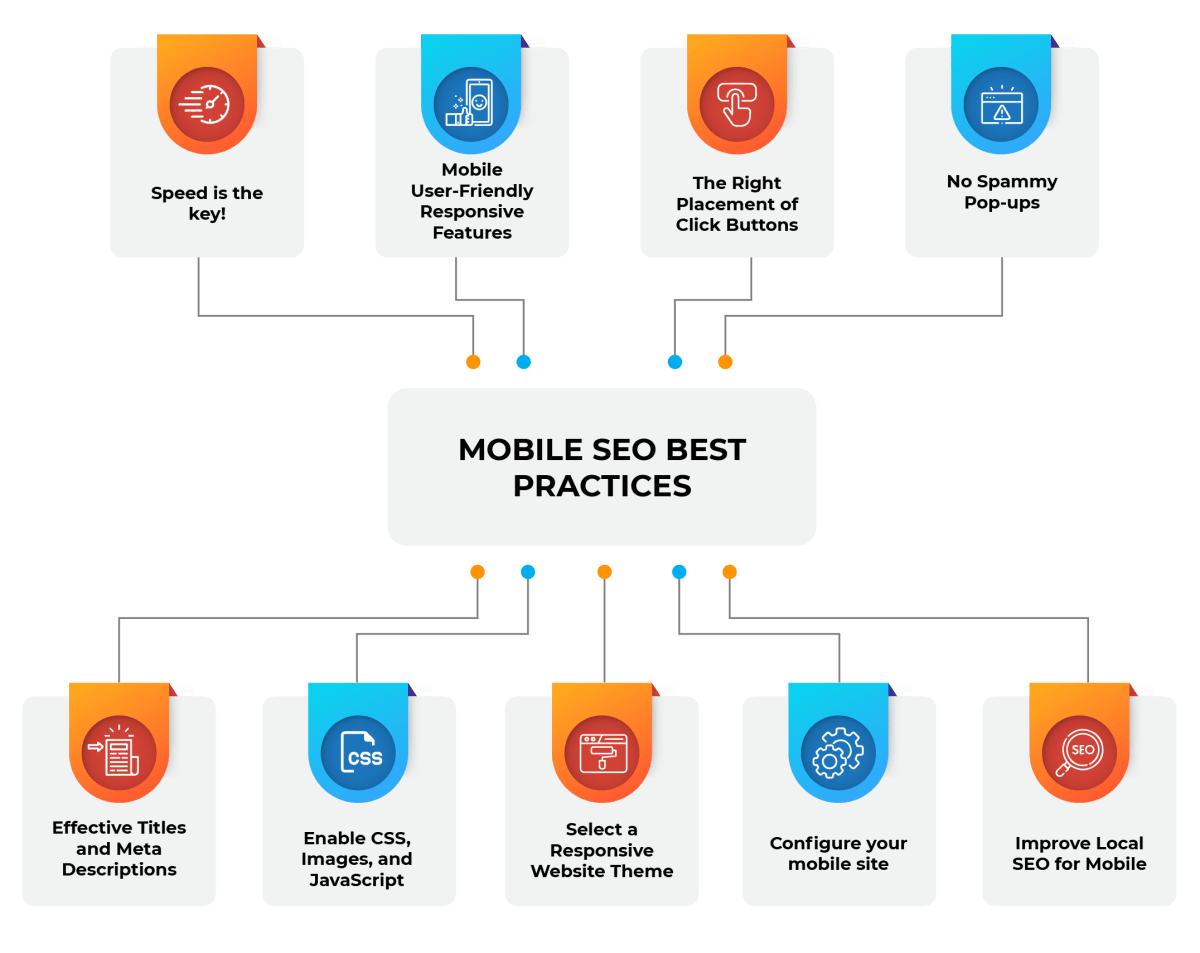Content
SHARE

How to Maximise Mobile SEO in 2025: A Comprehensive Guide
Mobile devices have become integral to our daily lives in today’s digitally-driven world. From browsing the internet to shopping online, smartphones and tablets have revolutionised how we access information and interact with brands. As a result, businesses must adapt their online strategies to ensure maximum visibility in this mobile-dominated landscape. This comprehensive guide will provide valuable insights and strategies to maximise your mobile SEO in 2025.
Recent years have witnessed an exponential rise in mobile browsing. With over 60% of internet traffic coming from mobile devices, businesses must prioritise mobile SEO to remain competitive. By optimising your website for mobile devices, you can improve user experience, increase organic search visibility, and drive more qualified traffic to your site.
The Rise of Mobile Browsing
The widespread adoption of smartphones and improved internet connectivity has led to an unprecedented surge in mobile browsing. People now turn to their mobile devices to search for information, purchase, and engage with brands. As a result, ensuring that your website is mobile-friendly has never been more crucial. In today’s fast-paced world, convenience is key. Mobile devices offer users the flexibility to access the internet anytime and anywhere. Whether checking the latest news, browsing social media, or shopping online, people rely on smartphones to stay connected and informed. This consumer behaviour shift has revolutionised how businesses approach their online presence. Mobile browsing has also become an integral part of our daily lives. Mobile devices have become our go-to tool for instant information, from booking a table at a restaurant to finding the nearest gas station. Users can access knowledge and make informed decisions on the go with just a few taps on the screen.
The Impact of Mobile SEO on Online Visibility
As search engines evolve, they place increasing importance on mobile-friendly websites. Google, for instance, uses mobile-first indexing to determine search rankings. If your website is not optimised for mobile devices, it will likely suffer lower visibility in search results. By prioritising mobile SEO, you can ensure your website remains visible and accessible to users across all devices. Mobile SEO goes beyond just making your website look good on mobile screens. It involves optimising your site’s structure, content, and performance to provide the best user experience on mobile devices. This includes responsive design, fast loading times, and easy navigation. Meeting these criteria can enhance user engagement and encourage longer browsing sessions, ultimately boosting your online visibility.
In addition to improving search rankings, mobile SEO can drive more qualified traffic to your site. When users have a positive experience on your mobile-friendly website, they are more likely to engage with your content, explore your products or services, and convert into customers. By catering to the needs of mobile users, you can tap into a vast pool of potential customers and stay ahead of your competitors. Mobile SEO is not just about optimising for smartphones. With the rise of tablets, smartwatches, and other portable devices, ensuring your website is compatible with a wide range of screen sizes and resolutions is crucial. By embracing mobile SEO, you future-proof your online presence and adapt to the ever-changing digital landscape.
(Source: https://www.innovativehub.com.my/mobile-first-indexing/)
Key Elements of Mobile SEO
Mobile-Friendly Website Design
The foundation of successful mobile SEO lies in having a responsive and mobile-friendly website design. Your website should automatically adapt to different screen sizes and resolutions, providing users with a seamless browsing experience. Invest in a mobile-responsive design prioritising user experience, fast load times, and easy navigation.
Page Speed and Its Significance
In the fast-paced digital world, users expect instant access to information. Studies have shown that slow-loading pages can contribute to high bounce rates and decrease search engine rankings. Therefore, optimising your website’s load times is crucial for mobile SEO success. Compress images, minimise server response times, and leverage caching techniques to ensure your web pages load swiftly on mobile devices.
The Role of Local SEO in Mobile Search
Local SEO has become integral to mobile search success with the rise of “near me” searches and location-based services. You can increase your visibility in local search results by optimising your website for local keywords, creating locally relevant content, and establishing a presence on online directories and review sites. Utilise tools like Google My Business and Bing Places for Business to enhance your local SEO efforts.
Advanced Mobile SEO Strategies for 2025
Harnessing the Power of Voice Search
Voice search is rapidly gaining popularity, with devices like smart speakers becoming commonplace in households. Incorporating voice search optimisation into your mobile SEO strategy can enhance online visibility. Focus on long-tail keywords, structure your content to match natural language queries, and answer commonly asked questions concisely.
The Importance of Accelerated Mobile Pages (AMP)
Accelerated Mobile Pages (AMP) is an open-source framework that allows websites to load instantly on mobile devices. By implementing AMP, you can significantly improve user experience, reduce bounce rates, and increase your chances of ranking higher in mobile search results. Ensure your mobile pages are AMP-compatible and leverage AMP plugins or platforms to streamline implementation.
The Future of Mobile SEO: Artificial Intelligence and Machine Learning
The landscape of SEO is constantly evolving, and the emergence of Artificial Intelligence (AI) and Machine Learning (ML) will transform mobile SEO in the coming years. AI-powered chatbots, personalised search results, and predictive analytics will be critical in delivering enhanced user experiences. By embracing AI and ML technologies in your mobile SEO strategy, stay ahead of the curve.
Measuring the Success of Your Mobile SEO Strategy
Key Performance Indicators for Mobile SEO
Tracking and analysing key performance indicators (KPIs) is essential to evaluate the success of your mobile SEO strategy. Monitor organic mobile traffic, conversion rates, average session duration, and bounce rates. Use tools like Google Analytics to gain valuable insights into user behaviour and identify areas for improvement.
Utilising Google Analytics for Mobile SEO
Google Analytics provides robust features specifically tailored for mobile SEO analysis. Use the Mobile Overview report to understand your audience’s device usage and behaviour. Dive deeper into the Site Speed report to identify opportunities for improving mobile load times. Leverage the Search Console integration to track mobile-specific search queries and monitor your site’s mobile performance.
(Source: https://neilpatel.com/blog/mobile-site-load-faster/)
Common Pitfalls in Mobile SEO and How To Avoid Them
Avoiding Intrusive Interstitial Penalties
Intrusive interstitials are pop-ups or overlays that hinder user experience by obstructing content on mobile devices. Google penalises websites that use intrusive interstitials, thereby impacting mobile search rankings. To avoid penalties, ensure that any interstitials you use are non-intrusive and easily dismissible and do not prevent users from accessing the main content of your web pages.
The Danger of Slow-Loading Pages
As mentioned earlier, slow-loading pages can have a detrimental impact on user experience and search rankings. Regularly monitor your website’s load times and address any performance issues promptly. Minimise the use of large images, remove unnecessary scripts, and optimise your code to ensure efficient page rendering on mobile devices.
In conclusion, maximising your mobile SEO in 2025 is crucial for staying ahead in the online landscape. By understanding the importance of mobile SEO, focusing on key elements, implementing advanced strategies, measuring success, and avoiding common pitfalls, you can ensure that your website remains visible and accessible to users across all mobile devices. Embrace the power of mobile SEO to drive organic traffic, engage your audience, and achieve online success in the mobile-dominated era.
Frequently Asked Questions About How to Maximise Mobile SEO
What Is Mobile SEO, and Why Is It Important in 2025?
Mobile SEO refers to optimising websites for search engines while focusing on improving the user experience on mobile devices. It’s crucial in 2025 as most internet traffic comes from mobile devices, influencing search rankings and user engagement.
How Can I Improve My Website's Mobile Speed For Better SEO?
To enhance mobile speed, focus on optimising images, leveraging browser caching, minifying CSS, JavaScript, and HTML, using responsive design, and considering accelerated mobile pages (AMP) to improve loading times and user experience.
What Are the Key Elements Of Mobile User Experience To Focus On?
Key elements include responsive design, easy-to-use navigation, fast loading times, accessible and readable content, interactive elements designed for touch, and ensuring your site is free from intrusive pop-ups and ads that can hinder mobile user experience.
How Does Google's Mobile-First Indexing Impact SEO?
Google’s mobile-first indexing means the mobile version of your website becomes the primary version used for indexing and ranking. To adapt, ensure your mobile site contains the same content as your desktop site, optimise site speed, and enhance usability for mobile users to improve your SEO rankings.














